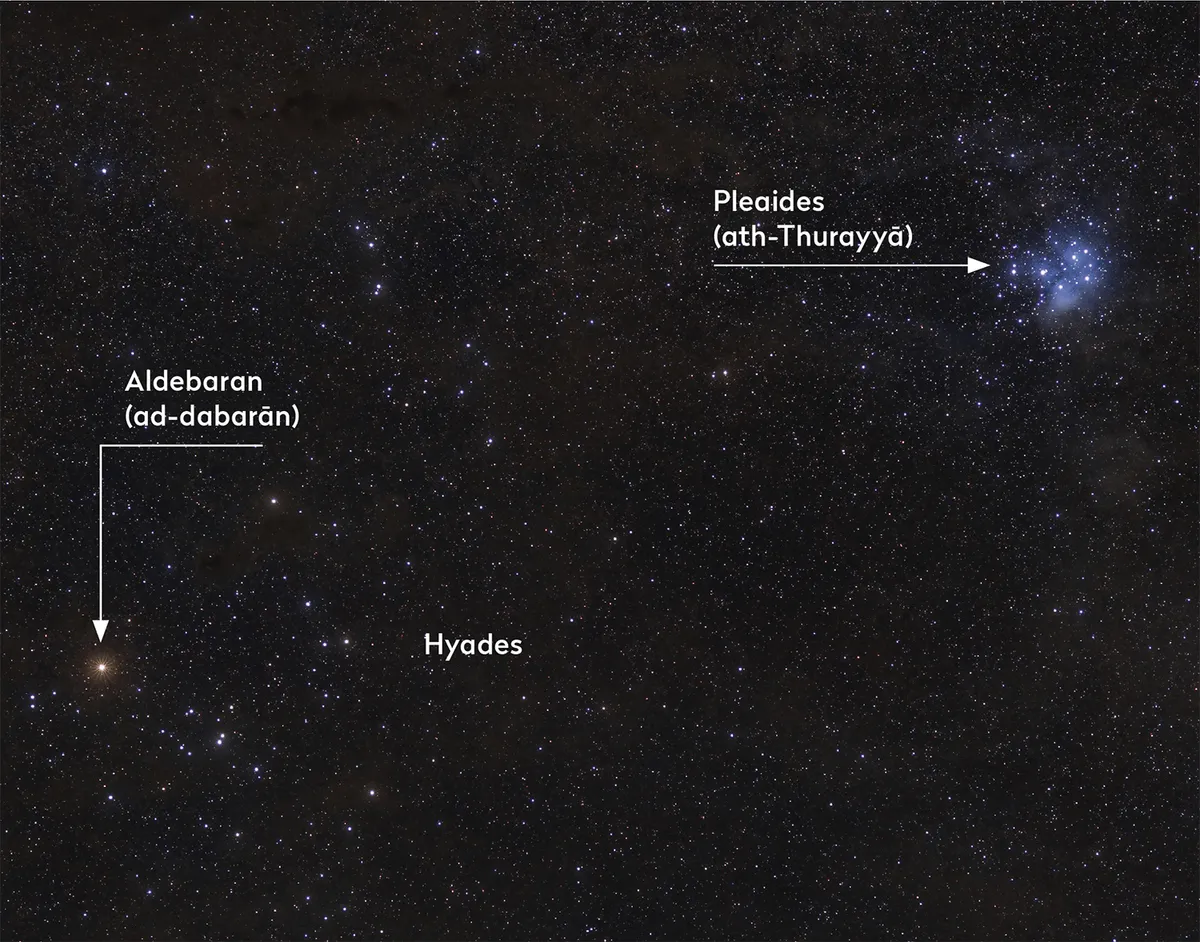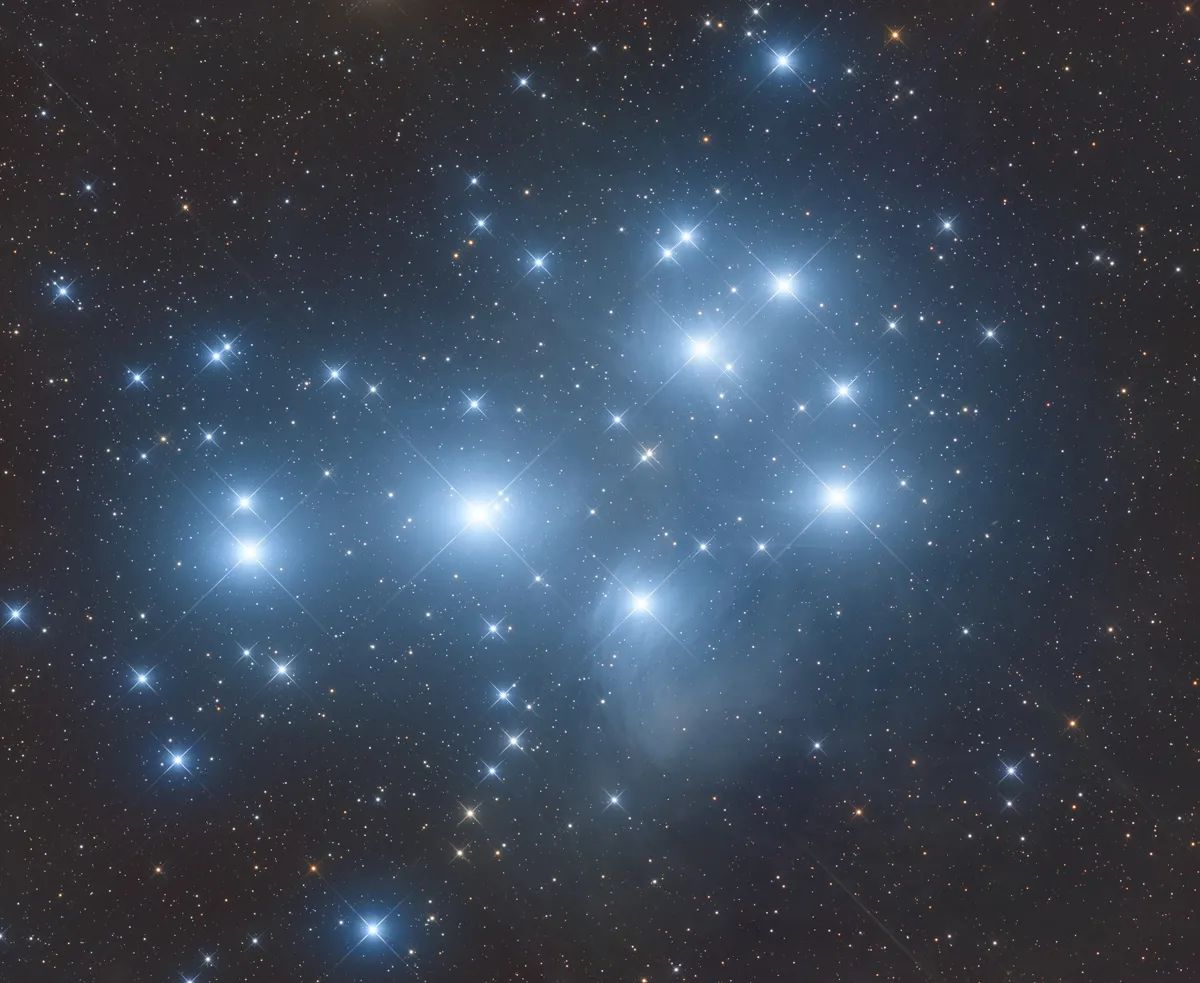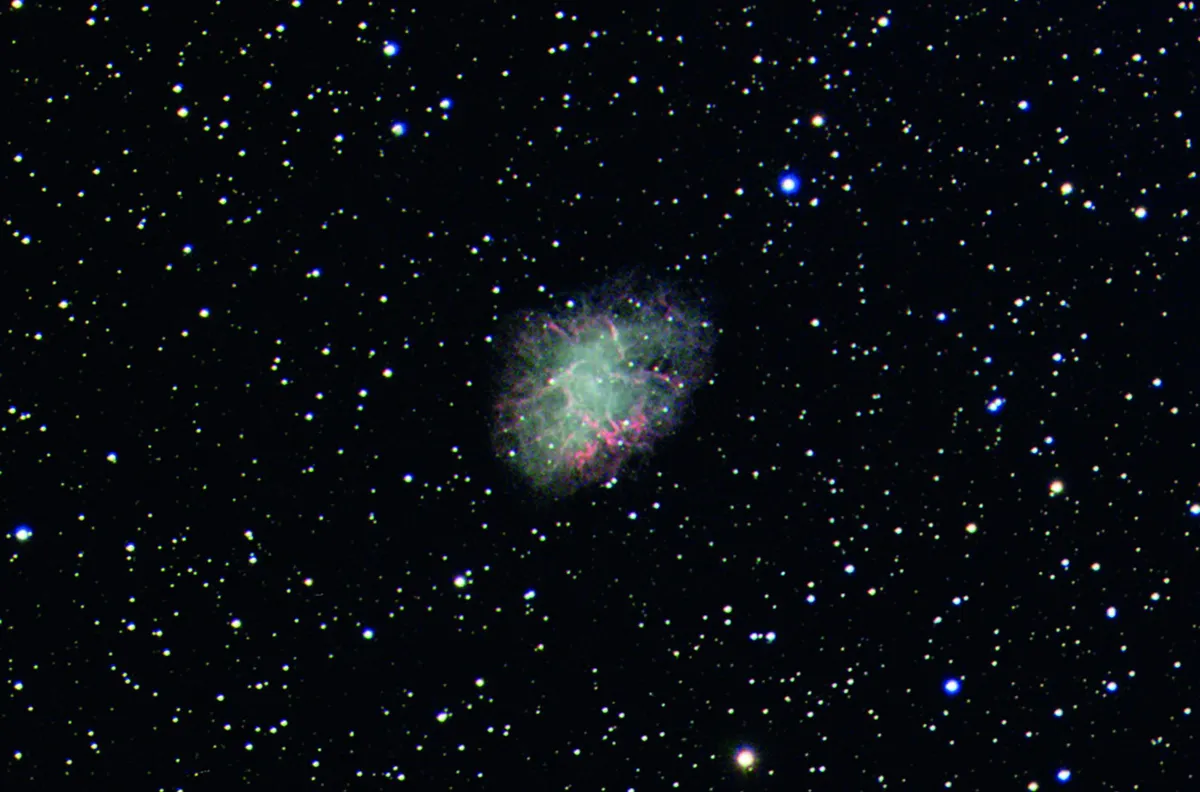Taurus , the Bull, is one of the most familiar constellations in the northern hemisphere winter sky, rising just above the Orion constellation and containing Aldebaran, which one of the brightest stars in the sky and certainly the brightest in Taurus itself.
Aldebaran is often referred to as 'the Eye of Taurus' because it looks like a great big red eye on the bull's face.
The name 'Aldebaran' is Arabic and means 'Follower', because in Arabian astronomy it is seen to follow the Pleiades star cluster across the night sky.

This makes the easily-recognisable Pleiades a good starting point for those wishing to find Aldebaran and Taurus in the winter night sky.
Pleaides also happens to be the first entry in our deep-sky tour of Taurus, which takes in some of the best targets to observe in the constellation through a telescope.
For help locating each target, download our PDF chart.
6 deep-sky objects in Taurus
1
M45

We’ll start with one of the most familiar star clusters in the night sky, the Pleiades, or Seven Sisters, which is easily visible to the naked eye. Binoculars bring it out well, but you’ll need to use a low power eyepiece when using a scope, otherwise you’ll look right through it.
The sheer number of stars revealed with a scope is a joy to behold. If you have dark skies, look out for the misty nebulosity within the cluster, most notably the Merope Nebula, NGC 1435 around Merope (23 Tauri), the southernmost star in the main box shape within the cluster.
2
The Hyades

The Hyades is a large, sideways, V-shaped cluster at the heart of Taurus and like the Pleiades, requires a low power eyepiece to see it properly. There are a number of treats in and around the Hyades, including various telescopic doubles such as 80 and 81 Tauri, Delta-3, Struve 545 and 559.
Larger apertures may like to look for Sharpless 2-239, a 13th magnitude oval-shaped reflection nebula occupying an area about 5 arcminutes across. A short distance to the north of the cluster lies NGC 1555, which is known as Hind’s Variable Nebula. It appears as a faint glow to the west of 10th magnitude star T-Tauri, varying in brightness thanks to T-Tauri’s variability.
3
NGC 1615

This region of the sky is rich in local deep-sky objects embedded within the Milky Way and you wouldn’t normally associate it with external galaxies. There are some to be had though, including NGC 1615, which lies 1.9˚ to the east-northeast of Ain (Epsilon (ε) Tauri), the most northerly star in the Hyades’ sideways V.
The galaxy is an S0 class lenticular galaxy, shining at mag. +13.7. A 300mm scope will show it as a faint glow about 50 x 30 arcseconds across, its circular core visible with direct vision, although the outer halo requires averted vision.
4
NGC 1647

The V-shape of the Hyades is easy to visualise with the naked eye. Imagine the two stars at the opening of the V, Aldebaran (Alpha (α) Tauri) and Ain (Epsilon (ε) Tauri) as a mirror line. Reflect the star at the point of the V, Gamma (γ) Tauri, and the position you arrive at marks NGC 1647’s location, an open star cluster easily viewed with a small scope.
A 150mm scope reveals almost 50 stars within a 45-arcminute region, many arranged in pairs. A 250mm scope reveals a more densely populated core, 30 arcminutes across, with the less populated surrounding area extending to a degree across. ο SEEN IT
5
NGC 1746

The arms of the Hyades extend towards two stars, marking the Bull’s horn tips; Elnath (Beta (β) Tauri) and Zeta (ζ) Tauri. Approximately midway along the northern extension towards Elnath and slightly south is open cluster NGC 1746, which makes a good comparison with NGC 1647. NGC 1746 generally contains fainter stars, with the exception of half a dozen brighter ones across the area. A 150mm scope shows a haze of around 75 stars within a 30-arcminute region at the cluster’s centre.
However, things aren’t as they seem here, because the region contains three NGC objects; NGC 1746, 1750 and 1758. There’s also a question as to whether NGC 1746 is actually NGC 1750 or perhaps a separate cluster inside 1746. NGC 1750 overlaps with 1748. If you have the impression you’re seeing more than one cluster here, you probably are!
6
M1

M1, the Crab Nebula, lies near the star marking the Bull’s southern horn tip, Zeta (ζ) Tauri. The first entry in the Messier Catalogue is fairly well known, the Crab Nebula representing the remnants of a star that was seen to explode in AD 1054. A 150mm scope shows an elongated haze, 5 x 3 arcminutes across.
Its oval shape appears mottled and it’s possible to make out a rough ‘S’ shape formed from the brighter mottles. The nebula appears uneven in brightness, the northwest half brighter than the rest. M1 is sometimes described as appearing like a faint comet with a short tail.
This guide originally appeared in the November 2021 issue of BBC Sky at Night Magazine.


